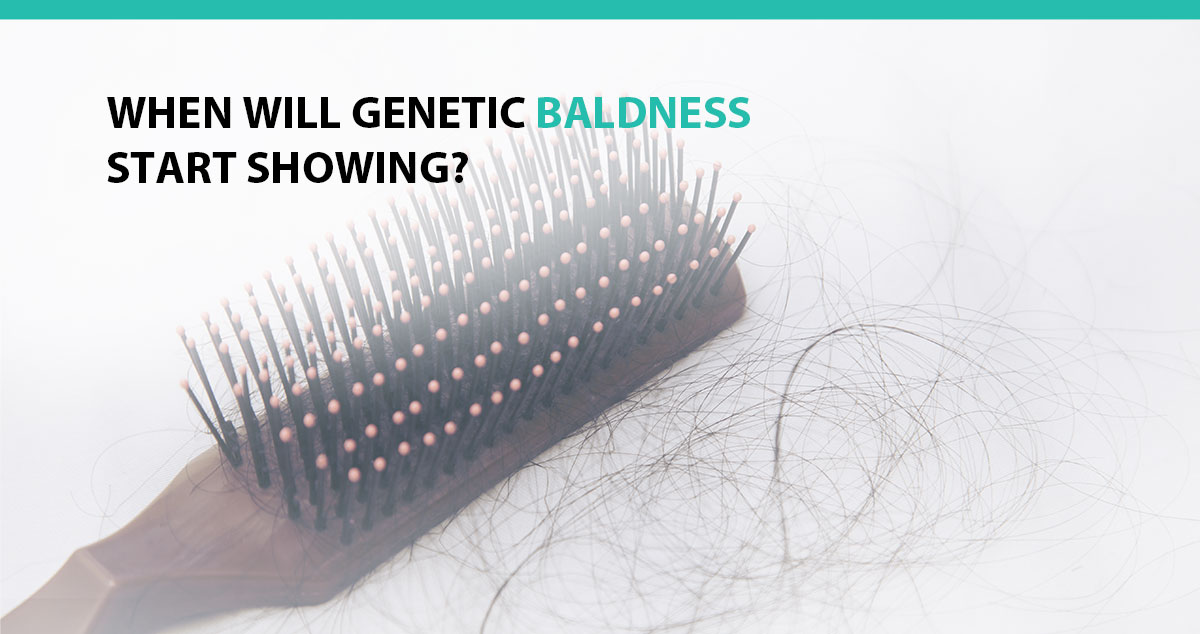
There’s a persistent myth that hair loss is passed down from the mother’s side of the family.
While there’s some truth to this, this myth is not entirely factual. Male pattern baldness, or androgenetic alopecia, is a heritable trait strongly associated with the AR gene that’s found on the X chromosome. Since men get their X chromosome from their mothers, looking into the genes on your mother’s side makes sense.
In reality, male pattern baldness involves more than one gene and, therefore, can be attributed to both the X and Y chromosomes. That said, genetics on both sides of your family play a central role in determining the degree of hair loss you’ll be subject to with age.
That, of course, leads to the next question: when will genetic baldness start showing? The answer is: it depends.
Average Age People Start Losing Hair
Male pattern baldness starts from about the age of 30 but can occur at any age past puberty. Nearly two out of every three men will experience balding by the time they’re 60, and this percentage only increases with age.
The majority of people will start noticing hair loss or hair thinning in their mid to late twenties. Losing your hair is difficult at any age but particularly so in your teens and early 20s. If you notice hair loss at this early age, it’s best to consult a physician to determine the cause and the hair restoration treatments available to you.
If you’ve maintained most of your hair by middle age, it’s likely you’ll experience a slower rate of male pattern hair loss. It means your hair follicles are less sensitive to dihydrotestosterone (DHT), an androgen derived from testosterone that shrinks your hair follicles at high levels.
Although baldness is often associated with men, hair loss can affect anyone – no matter the gender. The genetic component of female pattern baldness is still unknown as of yet but is thought to involve many different genes. It usually begins about the age of 30, becoming more noticeable with time. However, many women start noticing hair loss following menopause, which could also suggest a hormonal cause.
Age, stress, and other factors can also cause and exacerbate the rate and amount of hair loss.
Hair Restoration Treatments: How They Work, Success Rates
Today, there’s no cure for either male or female pattern baldness. But there are a range of restorative hair loss treatments available to you. Medicines like finasteride and minoxidil can help treat hair loss, but the results are not consistent for different people. What’s more, it’s not possible to predict whether these medicines will work for you or not.
Another option is to consider hair transplant surgery.
A hair transplant is a surgical procedure that involves removing hair follicles from the back or sides of the head where they are resistant to DHT and moving them to the bald areas.
Two main techniques are used to obtain hair follicles for transplantation: Follicular Unit Transplantation (FUT) or Follicular Unit Excision (FUE). The main difference is that the surgeon cuts a strip of skin from the scalp from which they extract individual hair follicles in FUT, whereas individual follicular units are removed directly from the scalp in FUE procedures. It’s best to consult with your physician to determine the best surgical option for you.
Both men and women are good candidates for hair transplant surgery as long as they have enough healthy hair follicles on the scalp to be transplanted.
Las Vegas Hair Transplant and Restoration
A hair transplant can give you permanent, natural-looking results. Select only a licensed, certified surgeon and ask to see a portfolio of past procedures. This way, you’re assured you’re getting the best care possible. Schedule a consultation if you would like to find out more about our Las Vegas hair restoration treatments and what we can do for you.










